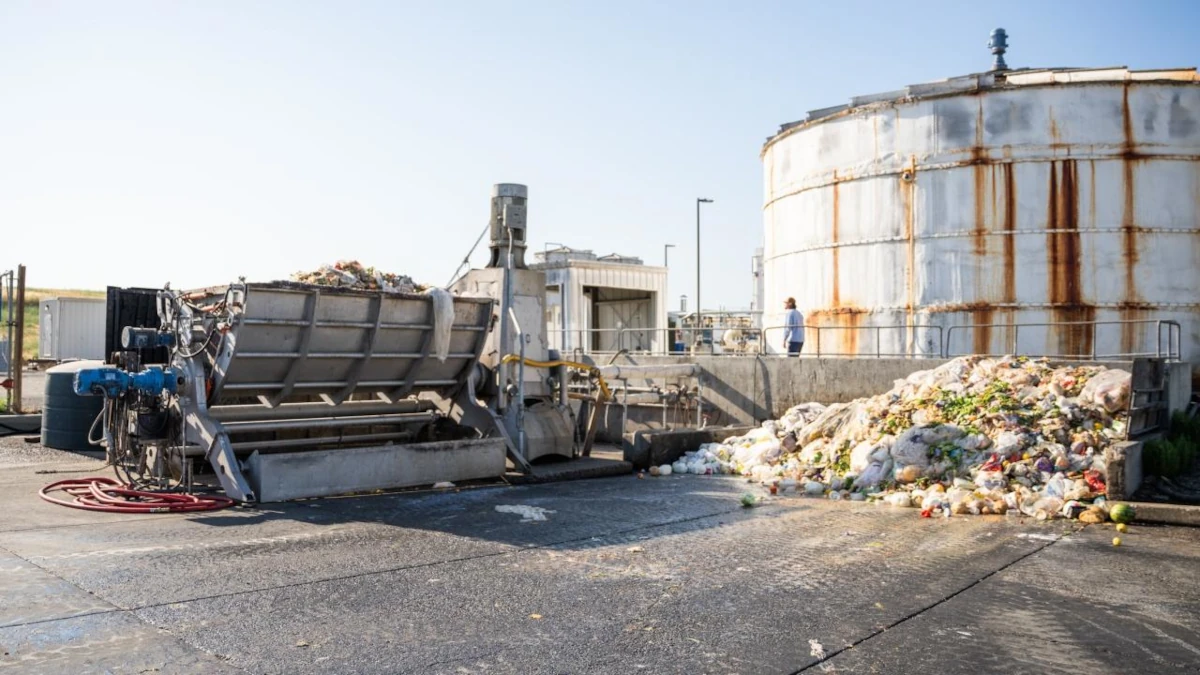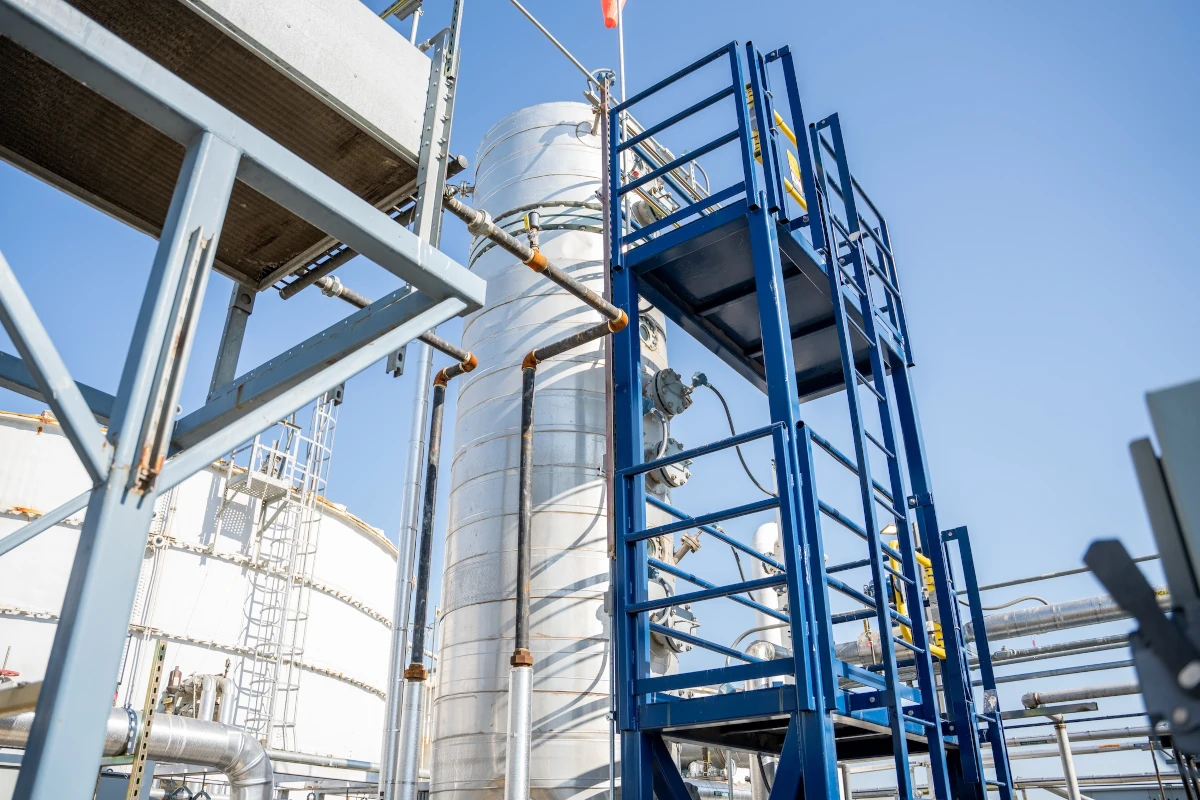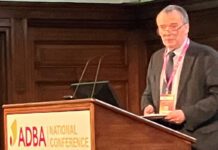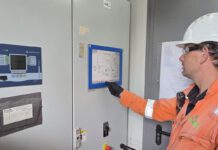
A perennial problem with anaerobic digesters is the tendency to produce ammonia, which can introduce complications when it comes to finding a suitable destination for digestate. Scout Mata and Katie Hetrick discuss nutrient recovery initiatives being undertaken at the University of California (Davis) with an anaerobic digestion facility called the Renewable Energy Anaerobic Digester, or READ.
A typical day at READ involves processing 20 tons of food and grease-trap waste from local grocery stores and campus dining rooms – waste that would otherwise end up in landfill. Trucks deliver food waste in plastic garbage bags, which are then separated by depackagers into an organic fraction (food) and contaminants (mostly plastic). The organics are liquified into a slurry and added to the digester.
The process generates ammonia in concentrations that are too high for disposal and processing at the campus’s wastewater treatment plant, yet too low to be valuable as fertilizer. Proper disposal of this ammonia-rich digestate can be costly.
“We ultimately had to pay a farmer to remove and use it,” said Joe Yonkoski, UC Davis Facilities Management superintendent of thermal infrastructure and biodigester supervisor. “This cost represented a significant portion of READ’s operating costs.”
To address this challenge, Facilities Management collaborated with Harold Leverenz, then a postdoctoral researcher in the UC Davis Department of Civil and Environmental Engineering. In his spare time, Dr. Leverenz conducted research in his garage with Rus Adams, to evaluate strategies for separating and concentrating the ammonia from waste streams, including urine, the digestate from READ and other sources. They produced research prototypes of nutrient recovery technologies which were installed on campus for testing at UC Davis’ wastewater treatment plant. The team also founded Advanced Environmental Methods LLC, or AEM, to explore the commercial aspects of nutrient recovery projects, and tackle some of the problems.
“I’ve been interested in helping solve the problem of nutrient pollution through nutrient recycling since my time as an undergraduate in biosystems engineering at Michigan State University,” said Leverenz, who still conducts research for UC Davis Civil and Environmental Engineering and also designs constructed wetlands and other natural treatment systems as an engineer at Biohabitats, Inc.
“We could be capturing nutrients from waste streams for beneficial use in crop production and create a closed-loop system instead of discharging these fertilizers into our waterways or putting it into the air or landfills.”
This collaboration led to an auspicious partnership between AEM and Facilities Management who together led the design of this one-of-a-kind ammonia distillation system, the Chemdist Group who fabricated it, and California Safe Soil, a fertilizer and pet nutrition product manufacturer.

The system processes the ammonia-rich digestate, separating it into nearly ammonia-free digestate and concentrated ammonia. The ammonia-free digestate can be processed at the campus’s wastewater treatment plant, or by other means, locally without adding excess nutrients to inland waters. The concentrated ammonia product has now become a valuable commodity purchased by California Safe Soil as an ingredient in the formulation of a certified organic fertilizer.
“The new ammonia extraction system not only eliminates a major operating cost, it’s environmentally responsible, generates revenue, and helps support the operation of READ,” said Yonkoski. “It’s taken years of hard work and collaboration so we’re excited that it’s up and running.”
Fossil-free solution
With this update, UC Davis addresses a significant challenge for anaerobic digester facilities worldwide. READ’s novel ammonia extraction system can remove 90-97% of ammonia from the digestate without the use of fossil energy sources – resulting in a low-carbon or “green” ammonium fertilizer. With more efficient and sustainable digestate recycling, the facility’s capacity to process food waste can increase from 20 tons per day to 50 tons per day, further reducing landfill waste.
The system also aligns with California’s SB 1383 objectives by reducing greenhouse gas emissions and enhancing the economic viability of anaerobic digestion. To this end, research is ongoing at READ to advance the biorefinery concept, where our urban waste streams are processed for the recovery of various products, including organic acids, nutrients, energy, and water. As demand grows for “green” waste management solutions, UC Davis serves as a model for institutions worldwide, while READ’s progress highlights the importance of continued research and collaboration in achieving sustainable solutions.
While the ammonia distillation column has enhanced digestate management, the Facilities Management group said they are eager to make further improvements. Help towards this end has so far been forthcoming in the shape of a CalRecycle grant.






